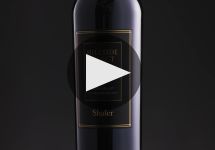Shafer One Point Five Cabernet Sauvignon 2022
-
Wine
Enthusiast -
Robert
Parker -
James
Suckling -
Jeb
Dunnuck
Most Gifted



Product Details
Your Rating
Somm Note
Winemaker Notes
Blend: 92% Cabernet Sauvignon, 3% Petite Verdot, 3% Merlot, 2% Malbec
Professional Ratings
-
Wine Enthusiast
Dripping-ripe plums and other dark fruits are spun through with aromas of cracked pine and pitch for a complex wine from this Napa icon. Succulent and mouthwatering with melting tannins and a persistent finish.
-
Robert Parker's Wine Advocate
While the 2022 Cabernet Sauvignon One Point Five includes some purchased fruit, the aim is for it to become fully estate once new plantings come into production. It's an incrementally richer, darker and more concentrated wine than Shafer's TD-9, with black cherries wrapped in a subtle cloak of almost ephemeral cedar and vanilla. Full-bodied and velvety textured, with a lingering finish.
-
James Suckling
This bottling brings a slightly lighter aromatic touch to the Shafer reds, with its red cherry and strawberry aromas over a very full body. Broad, ripe and generous red fruit is wrapped in moderate tannins for good structure and some aging potential.
-
Jeb Dunnuck
The 2022 Cabernet Sauvignon One Point Five is based on 92% Cabernet Sauvignon, 3% Petite Verdot, 3% Merlot, and 2% Malbec that was bottled in May of 2024. Tons of juicy red and black berries, incense, new leather, and spicy notes all define the aromatics, and it's medium to full-bodied, has a juicy, elegant mouthfeel, good richness, and outstanding length.
Other Vintages
2021-
Wine
Enthusiast -
Jeb
Dunnuck -
Wine
Spectator -
James
Suckling -
Robert
Parker
-
Jeb
Dunnuck -
Tasting
Panel -
Wine
Enthusiast -
James
Suckling -
Wine &
Spirits -
Robert
Parker -
Wine
Spectator
-
Wine
Enthusiast -
Tasting
Panel -
Jeb
Dunnuck -
James
Suckling -
Wine
Spectator -
Robert
Parker - Decanter
-
James
Suckling -
Wine
Enthusiast -
Tasting
Panel -
Jeb
Dunnuck -
Wine
Spectator -
Robert
Parker
-
Wine
Enthusiast -
James
Suckling -
Robert
Parker -
Jeb
Dunnuck -
Tasting
Panel
-
Wine
Enthusiast -
Robert
Parker -
James
Suckling -
Jeb
Dunnuck -
Tasting
Panel -
Wine
Spectator - Decanter
-
Wine &
Spirits
-
James
Suckling - Vinous
-
Wine
Enthusiast -
Robert
Parker -
Wine
Spectator
-
James
Suckling -
Wine
Enthusiast -
Wine &
Spirits -
Robert
Parker -
Wilfred
Wong
-
Tasting
Panel -
Robert
Parker -
Wine
Spectator
-
Robert
Parker -
James
Suckling -
Tasting
Panel
-
Robert
Parker -
Wine &
Spirits -
Wine
Spectator
-
Robert
Parker -
James
Suckling -
Wine
Enthusiast -
Wine &
Spirits -
Wine
Spectator
-
Wine
Enthusiast -
Robert
Parker -
James
Suckling -
Wine
Spectator
-
Robert
Parker -
Wine &
Spirits -
Wine
Enthusiast
-
Wine &
Spirits -
Wine
Enthusiast -
James
Suckling
-
Robert
Parker
-
Wine
Spectator -
Wine
Enthusiast -
Robert
Parker -
Wine &
Spirits

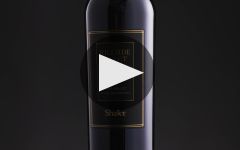

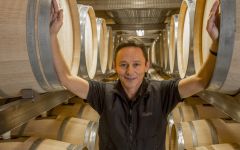
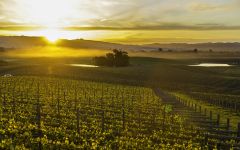

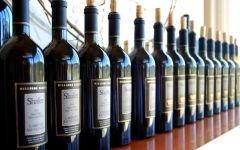
Shafer Vineyards has produced classic Napa Valley wines for more than 40 years.
Shafer’s wines, including its signature Cabernet Sauvignon, Hillside Select, are found in collectors’ cellars and on wine lists in top luxury hotels and restaurants throughout the world.
The vineyard and cellar teams, led by winemaker Elias Fernandez, cultivate more than 200 acres of Shafer-owned vineyards, sources for the winery's celebrated Red Shoulder Ranch Chardonnay, TD-9, One Point Five, Relentless, and Hillside Select.
The winery has a decades-long commitment to sustainability. Beginning in the 1980s Shafer embraced farming techniques that eliminate insecticides and herbicides, and carefully conserve water resources. In 2004 Shafer became the first winery in the U.S. to go 100% solar.

A noble variety bestowed with both power and concentration, Cabernet Sauvignon enjoys success all over the globe, its best examples showing potential to age beautifully for decades. Cabernet Sauvignon flourishes in Bordeaux's Medoc where it is often blended with Merlot and smaller amounts of some combination of Cabernet Franc, Malbecand Petit Verdot. In the Napa Valley, ‘Cab’ is responsible for some of the world’s most prestigious, age-worthy and sought-after “cult” wines. Somm Secret—DNA profiling in 1997 revealed that Cabernet Sauvignon was born from a spontaneous crossing of Cabernet Franc and Sauvignon Blanc in 17th century southwest France.

Legend has it that quick and nimble stags would escape the indigenous hunters of southern Napa Valley through the landmark palisades that sit just northeast of the current city of Napa. As a result, the area was given the name, Stags Leap. While its grape-growing history dates back to the mid-1800s, winemaking didn’t really take off until the mid-1970s after a small but pivotal blind tasting called the Judgement of Paris.
When a 1973 Stag’s Leap Wine Cellars Cabernet Sauvignon won first place against its high-profile Bordeaux contenders, like Chateau Mouton Rothschild and Chateau Haut-Brion, international attention to the Stags Leap District of Napa Valley escalated rapidly.
The vineyards in this one-of-a-kind wine growing region receive hot afternoon air reflecting off of its eastern palisade formation. In combination with the cool evening breezes from the San Pablo Bay just south, this becomes an optimal environment for grape growing. While many varieties could thrive here, Cabernet Sauvignon and Merlot dominate with virtually no others, save for a spot or two of Syrah.
Stags Leap soils—eroded volcanic and old river sediments—encourage well established root systems and result in complex, terroir-driven wines. Stags Leap District reds have a distinct sour cherry and black berry character with baking spice and dried earth aromas, and supple tannins.
